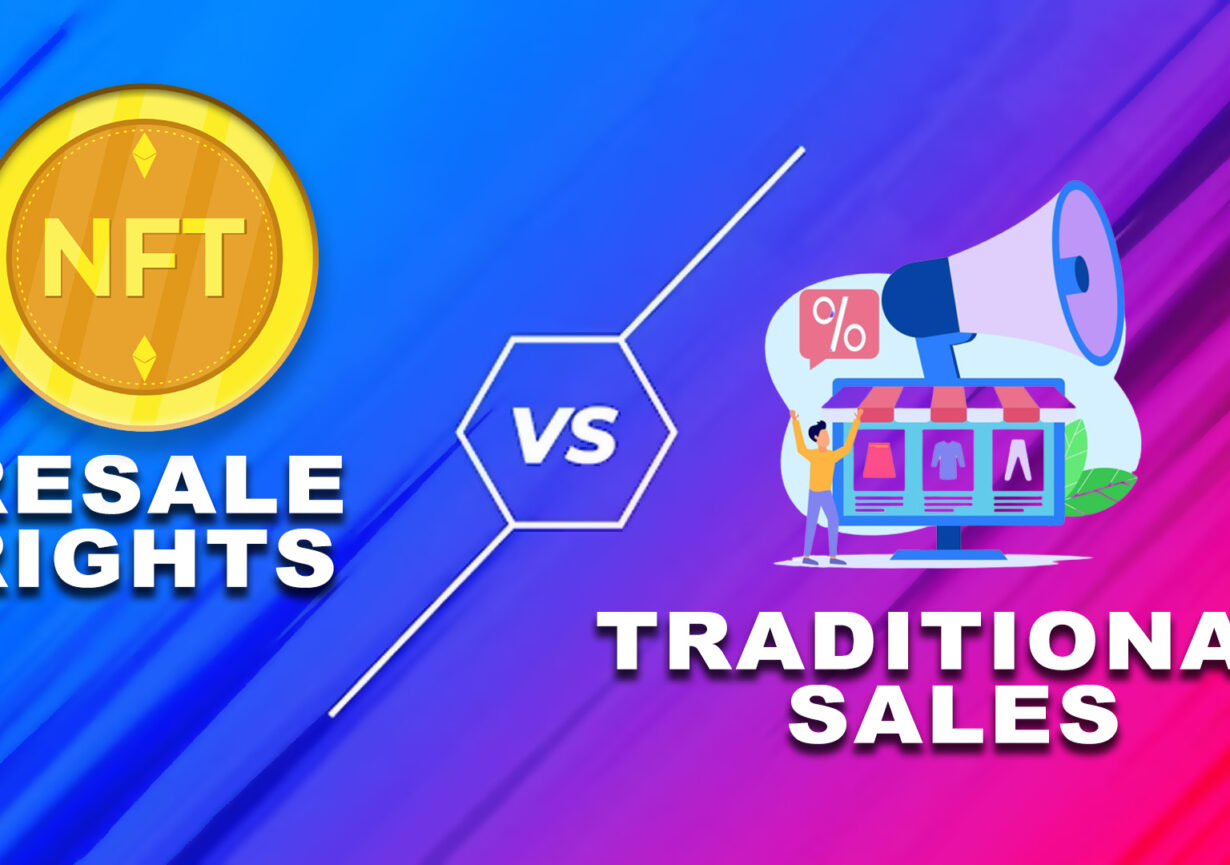Key Points:
- Unique Ownership vs Replication: NFTs provide irrefutable proof of ownership and authenticity, differentiating them from traditional digital content that can be easily replicated. This uniqueness is achieved through blockchain technology, granting buyers exclusive rights to the original digital asset.
- Digital Scarcity: NFTs capitalize on the concept of digital scarcity. In traditional sales, digital items can be duplicated infinitely, diluting their value. NFTs, however, ensure a controlled supply, driving demand and potentially enhancing value over time.
Introduction
In today’s ever-evolving digital landscape, the emergence of Non-Fungible Tokens (NFTs) has brought about a novel way of owning and trading digital assets. NFTs are unique digital tokens that represent ownership of a specific item, artwork, or collectible on the blockchain. As the popularity of NFTs grows, an intriguing comparison arises between NFT resale rights and traditional sales methods. Let us delve into the key aspects of both approaches.
1. NFT Resale Rights
Ownership Evolution: One of the most captivating features of NFTs is their ownership evolution. When an NFT is resold, the original creator can earn royalties with each subsequent transaction. This concept of ongoing compensation for creators is revolutionary in the digital realm.
Market Fluidity: NFTs foster a dynamic resale market, enabling investors to capitalize on price variations. The ability to trade NFTs on various platforms has democratized access to a global marketplace, reducing geographical limitations.
Liquidity and Valuation: NFT resale rights enhance liquidity as holders can exit investments more readily than in traditional markets. This is particularly advantageous when sentiment shifts quickly in the realm of digital art and collectibles .
2. Traditional Sales
Reproduction Challenges: Unlike NFTs, traditional digital art and content can be duplicated limitlessly, making it challenging for creators to retain exclusivity and profit from their creations. The absence of authentication mechanisms can result in piracy and copyright infringement.
Ownership Ambiguity: Traditional digital content lacks transparent ownership records, leading to ambiguity in provenance. NFTs solve this by establishing clear ownership history through blockchain, enhancing authenticity and value.
Limited Secondary Market: Traditional digital sales often lack a structured secondary market. Buyers may find it challenging to resell their digital purchases, thereby reducing the potential for investment growth.
Conclusion
In the evolving landscape of digital ownership, NFTs have redefined how we perceive and trade digital assets. Their unique attributes, from immutable ownership records to the potential for ongoing royalties, set them apart from traditional sales methods. However, traditional sales retain their place, serving audiences who value cost-effective access to digital content without the intricacies of blockchain technology.
In the end, the choice between NFT resale rights and traditional sales depends on individual preferences, investment goals, and the level of appreciation for blockchain’s innovation. Whether one chooses the authenticity and resale potential of NFTs or the simplicity of traditional digital sales, both approaches contribute to the diverse ecosystem of digital ownership and trading.


Leave a Reply